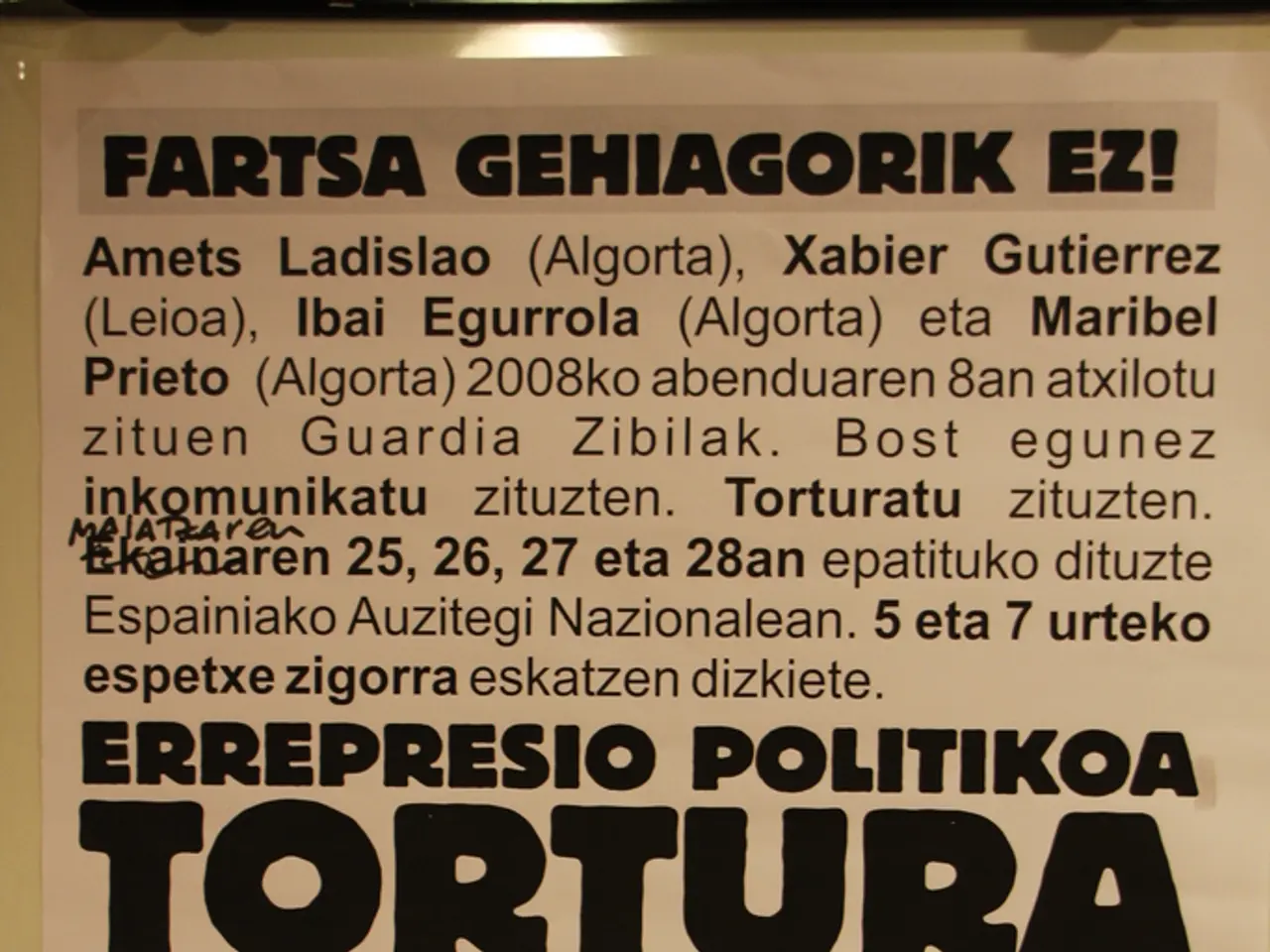Protests Erupt Over Sijena Murals During Aragon Team's Inspection Process
The National Art Museum of Catalonia (MNAC) is currently the temporary home to a set of 13th-century Romanesque murals, the subject of a long-standing ownership dispute with the Sijena Monastery. The dispute, which began in the 1990s, has seen extensive litigation, and a recent high court ruling has determined that MNAC was never the rightful owner of these priceless artworks[1].
This legal resolution marks a significant step towards enforcing a ruling concerning the Romanesque murals. The court found that the original religious order had never lawfully transferred ownership of the murals. The transfer or restitution process is likely ongoing, following the court decision.
MNAC, however, has expressed concerns about the potential harm of relocating the more delicate frescoes. Museum officials are adamant that some frescoes, especially those salvaged from the chapter house, are at risk of irreversible damage[2]. In response, MNAC is proposing a phased approach, starting with sturdier works that were removed in the 1960s.
The Aragonese technicians, led by restorer Natalia Martínez de Pisón, recently entered the museum discreetly through a side entrance to commence their work on the so-called profane murals[3]. The Aragonese team is using photogrammetry to assess the condition and viability of the murals for transport[4]. The inspection will continue through Wednesday.
The court's decision to order the return of the murals to the Sijena Monastery has sparked a protest, organised by the Catalan National Assembly and joined by figures such as Laura Borràs and Lluís Llach[5]. The protest took place outside MNAC on Monday morning, but failed to intercept the Aragonese team.
The fate of the core murals, already mounted, reconstructed, and climate-protected, remains uncertain[6]. MNAC has submitted filings warning the court of the risks and is expected to formally contest the execution order on conservation grounds. The Aragonese team is focusing on less fragile sections of the murals initially[7].
The murals were removed from the Sijena Monastery in 1936 after a fire during the Spanish Civil War[8]. The murals have been housed at MNAC ever since.
[1] - https://www.elpais.com/cultura/2021-06-03/el-tribunal-supremo-aprueba-la-devolucion-de-las-pinturas-medievales-del-monasterio-de-sijena-al-monasterio-de-sant-juan-de-la-pena.html [2] - https://www.elmundo.es/cultura/2021/06/02/5ef310ecf670f509258b4597.html [3] - https://www.elmundo.es/cultura/2021/06/01/5ef2f84df670f509258b4595.html [4] - https://www.catalannews.cat/culture/item/aragonese-team-begins-inspection-of-controversial-murals-at-mnac [5] - https://www.catalannews.cat/politics/item/catalan-national-assembly-organises-protest-against-the-court-s-decision-to-return-13th-century-murals-to-sijena-monastery [6] - https://www.catalannews.cat/culture/item/the-fate-of-the-core-murals-remains-uncertain-as-the-aragonese-team-begins-their-inspection-at-mnac [7] - https://www.elmundo.es/cultura/2021/06/01/5ef2f84df670f509258b4595.html [8] - https://www.catalannews.cat/culture/item/the-13th-century-romanesque-murals-currently-held-by-the-national-art-museum-of-catalonia-mnac-are-the-subject-of-a-long-running-ownership-dispute-with-the-sijena-monastery-7505568
- The legal resolution over the Romanesque murals, initially housed at the National Art Museum of Catalonia (MNAC), indicates that the Sijena Monastery should be the rightful owner of these historical artworks.
- MNAC is worried about the potential damage the relocation of certain frescoes from the chapter house might cause, and they are proposing a gradual process for transfer, starting with less delicate artworks.
- A team of Aragonese technicians, led by restorer Natalia Martínez de Pisón, is currently inspecting the so-called profane murals at MNAC using photogrammetry.
- Protests against the court decision to return the murals to the Sijena Monastery have occurred, with the Catalan National Assembly and figures like Laura Borràs and Lluís Llach taking part.






